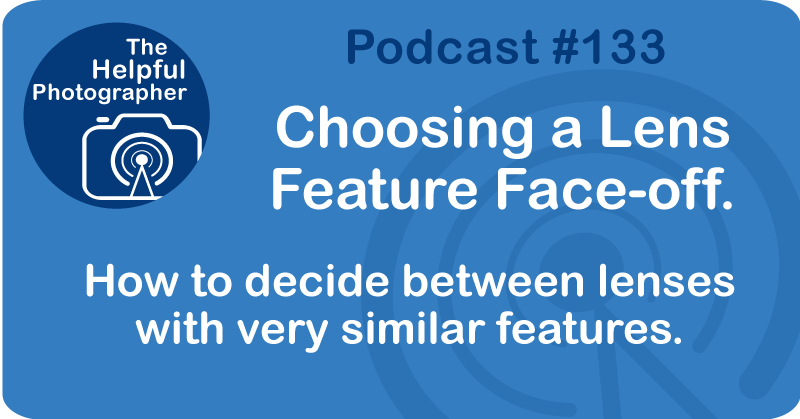Choosing a Lens: Feature Face-off #133
Choosing a Lens Feature Face-off #133

This podcast is for Mandy in Sydney. In the previous pod, I talked about the pros and cons of f 4.0 versus f 2.8 lenses. For some, the choice is pretty simple when that's the only deciding factor. Unfortunately, most of the manufacturers have made it harder for us by adding a couple more variables. The first is price. The slower lens can be as much as 50% cheaper, but I always tell people to take the price factor out of it as you only pay for it once. You'll carry that lens for the life of your body, and therefore your back will pay forever.
Let's look at the two new Nikon Ultra Wide Angle lenses. The Z 14 to 35 millimeter f/4, and also the 16 to 35 millimeter f/2.8. While my gut always tells me to go after the f/2.8, my heart would sure like that 14 millimeter. For the past 12 years, I've owned a 16 to 35 millimeter 2.8, and I have loved it. But every time I ran into someone with a 14mm, I was jealous. Oh, did I wish I had such a wide lens. But to get that extra 2mm, I would have to put up with the f/4. What can I do? This is the same debate I had getting the Canon 24-105mm f/4 versus the 24-70mm 2.8. While the 2.8 is truly a beautiful lens, the extra 35mm of the f/4 lens would prevent many, many, many, many more lens changes. And it's a lot lighter, but the 2.8 is really sharp and it's 2.8! In the end, I opted for the extra millimeters and I've been really happy with that decision and I've opted to buy it again as I upgrade to the mirrorless system. Even with that, the decision wasn't straight forward, Cannon has introduced a 24-105 f/2.8. but it's a much bigger lens. So I'm staying with the 4.0, same as what I had for the previous 10 years with my DSLR.
As for the ultra wide, I've decided I'm going with the slightly wider lens, even though in the Canon world, it is only one millimeter wider than the 2.8 version. Is there such a big difference when we're talking about one millimeter? Not really, but it's two more than what I currently have, so I really want it. The smaller and lighter weight is a huge bonus for my small frame. The fantasy in my head is that the extra resolution and high ISO capability of my new camera is going to make up for the slow f/4. As always, I hope that was helpful, but I think I probably just muddied the water a bit more. Sorry about that. Next week, I'll talk about variable aperture lenses.











